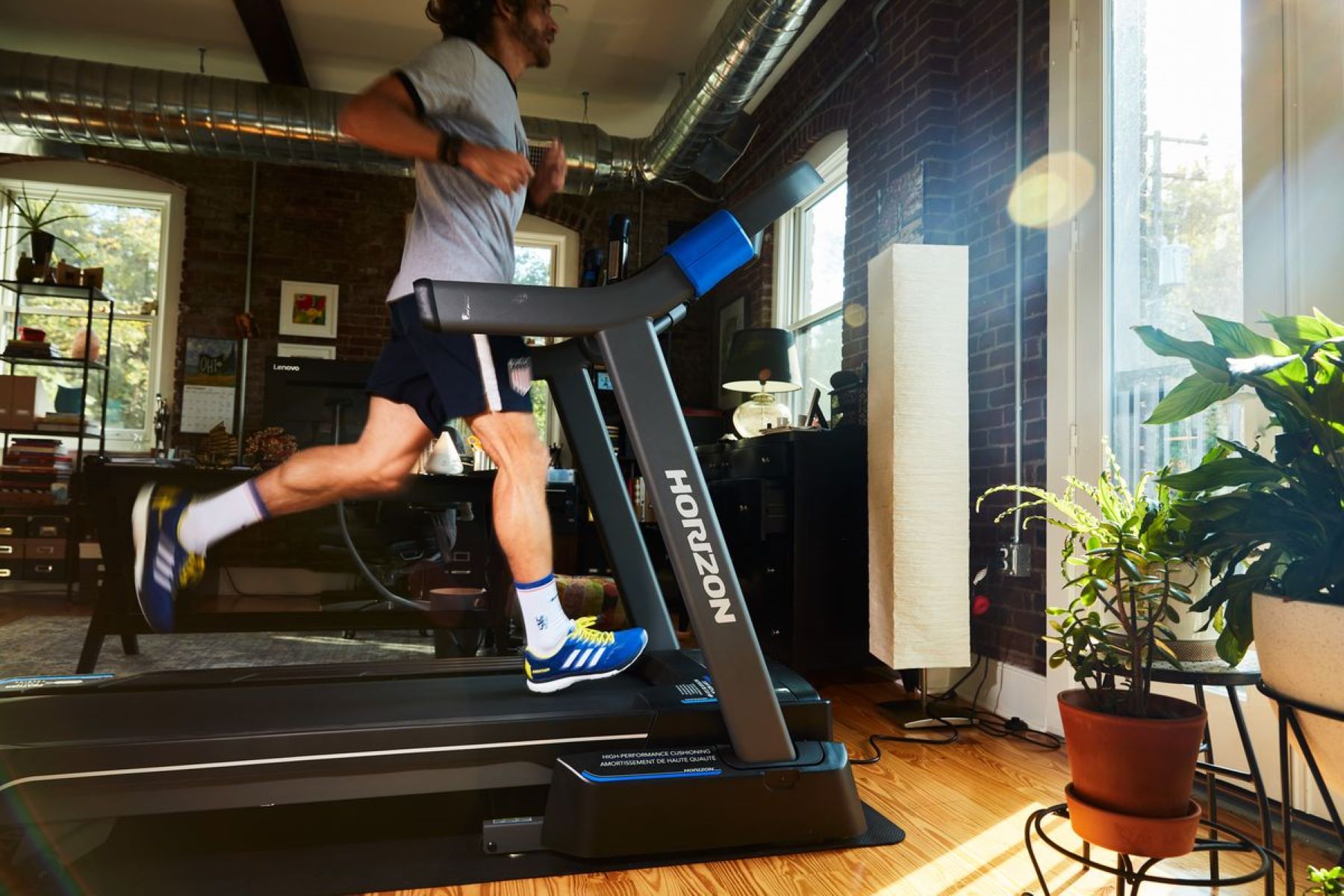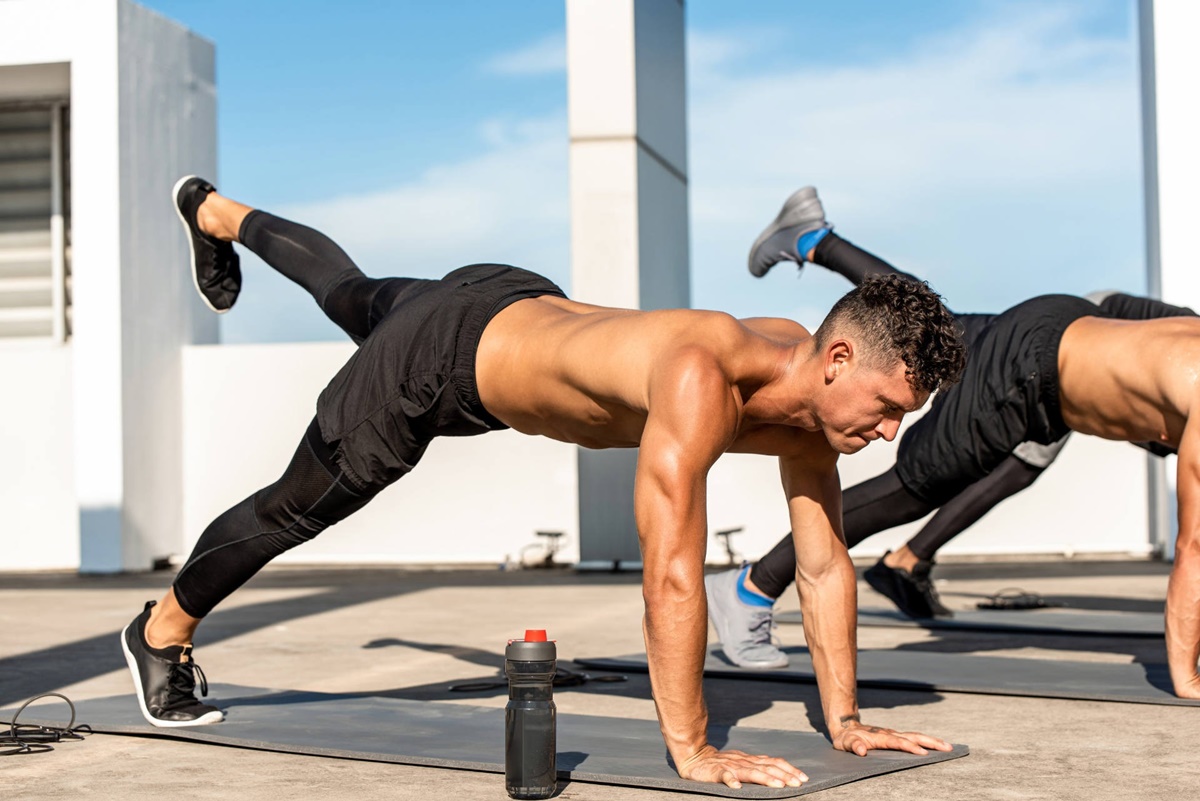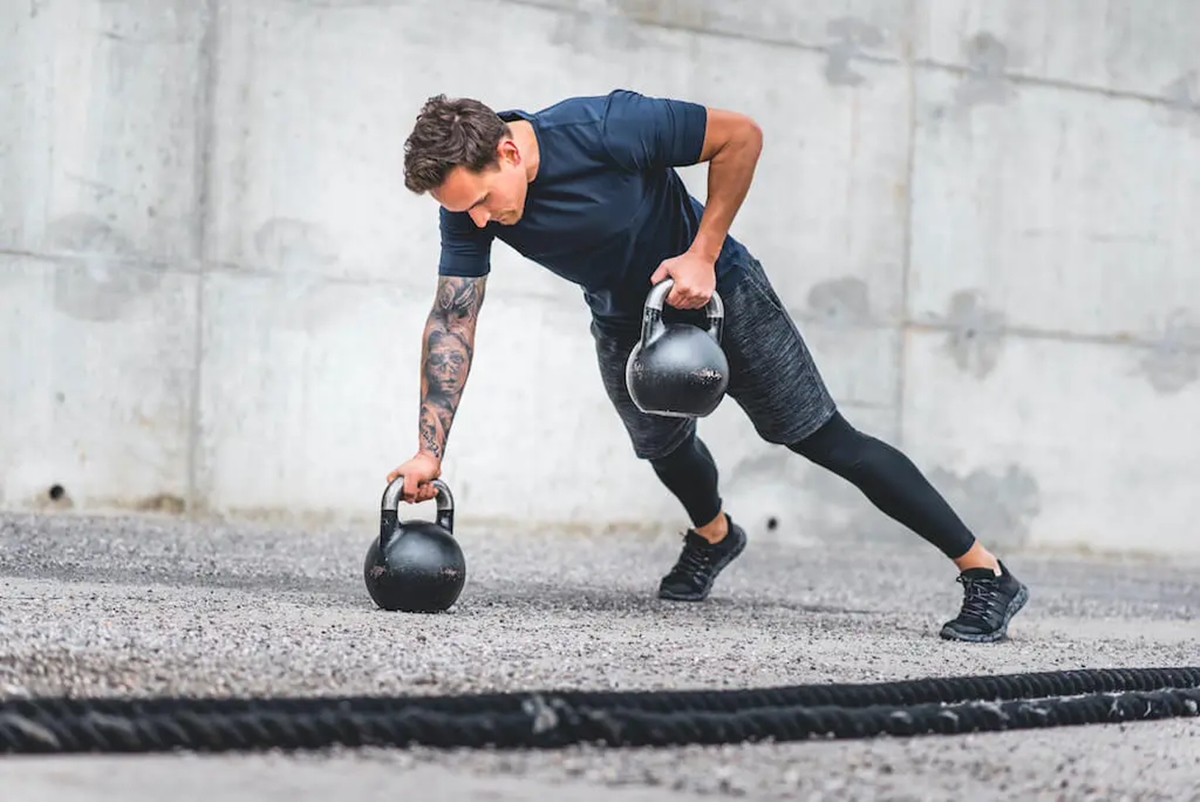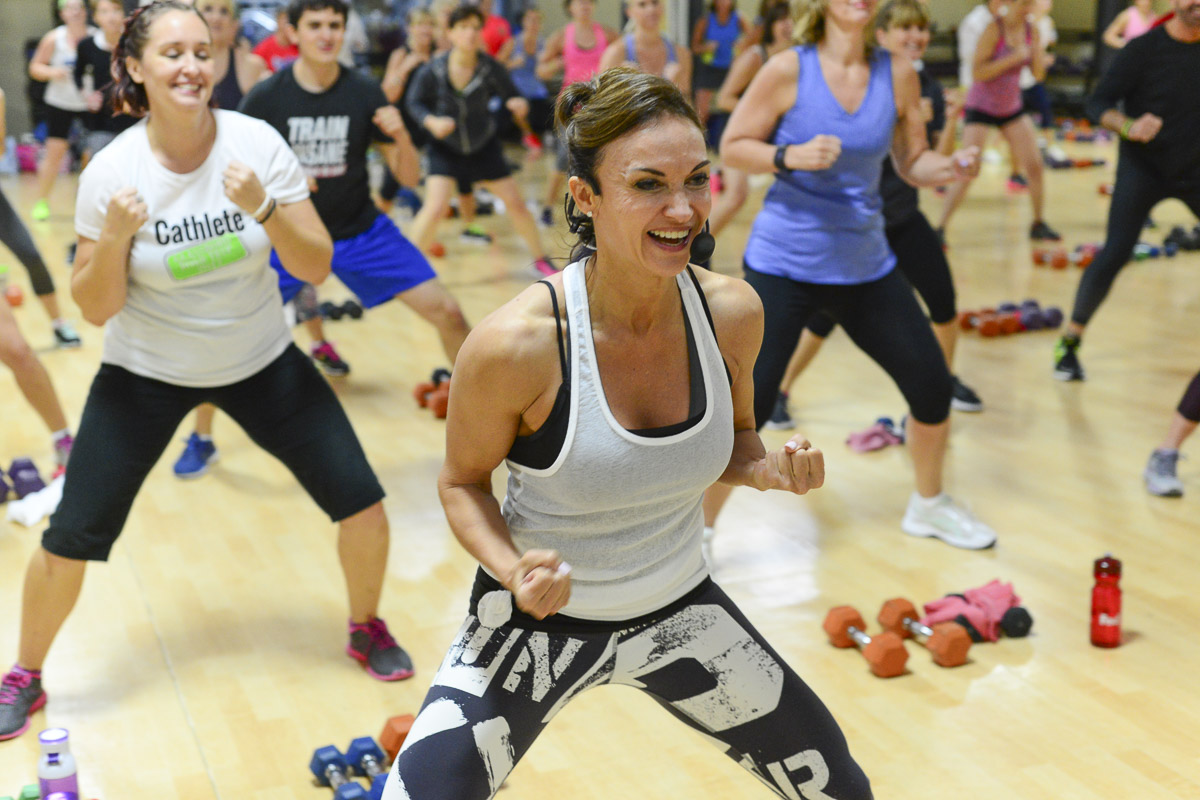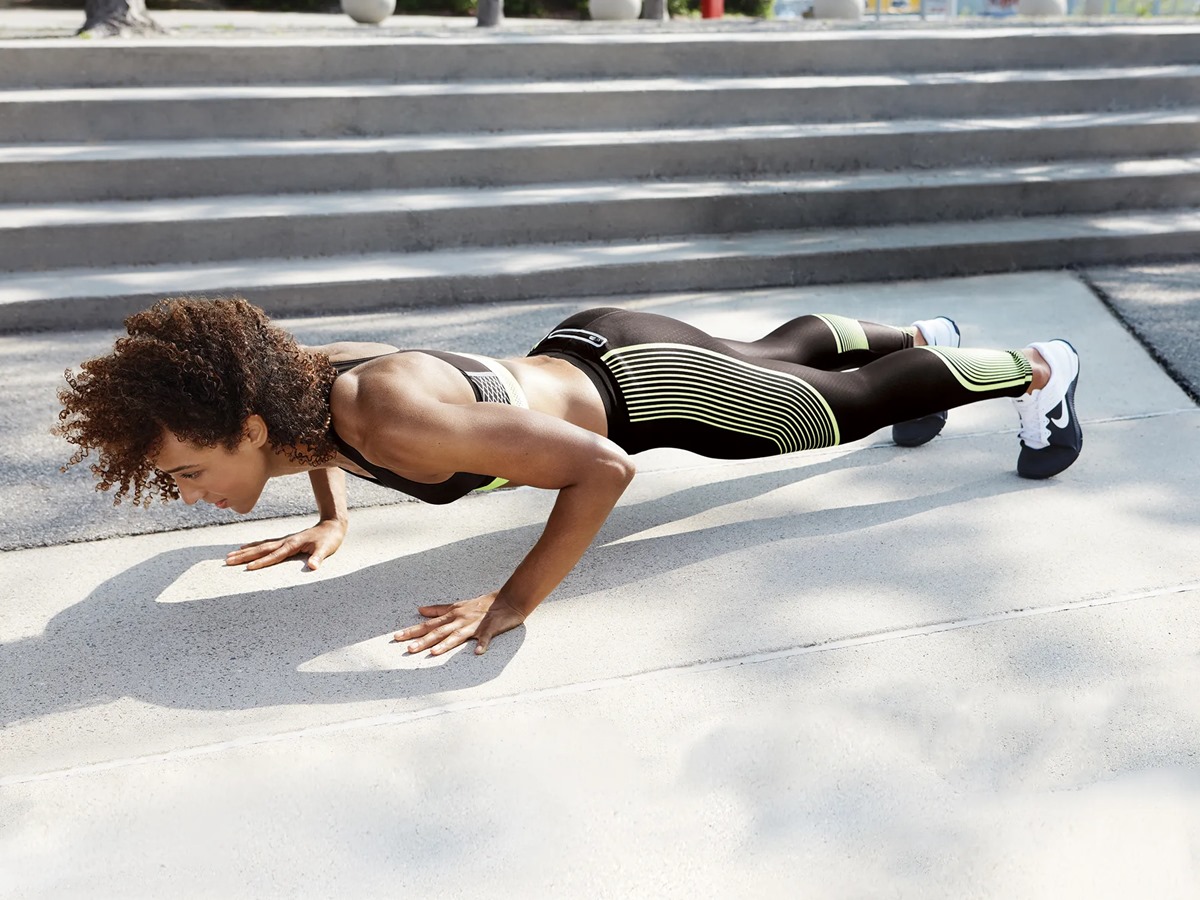Home>Misc>Featured>How To Burn Fat With High Intensity Interval Training


Featured
How To Burn Fat With High Intensity Interval Training
Modified: January 2, 2024
Discover how to burn fat with Featured High Intensity Interval Training (HIIT) workouts. Achieve your weight loss goals and boost your metabolism with this effective fitness technique.
Introduction
Welcome to the world of high intensity interval training (HIIT), a workout method that has gained popularity in recent years for its effectiveness in burning fat and improving fitness levels. Whether you’re looking to shed some extra pounds, improve cardiovascular health, or simply boost your overall fitness, HIIT can be a game-changer.
HIIT involves short bursts of intense exercise followed by brief periods of rest or low-intensity recovery. This form of training is in stark contrast to traditional steady-state cardio workouts, where you maintain a consistent pace for an extended period of time. HIIT workouts are known for their efficiency, allowing you to achieve the same or even better results in a fraction of the time.
In this article, we will explore the concept of HIIT, its benefits, and specifically how it can help you burn fat effectively. We will also provide tips on getting started with HIIT, choosing the right exercises, designing a workout, and ensuring safety during your training sessions.
Whether you’re a fitness enthusiast or a beginner, this article will equip you with the knowledge and tools to incorporate HIIT into your fitness routine and achieve your fat-burning goals. So, let’s dive in and discover the power of high intensity interval training!
What is High Intensity Interval Training (HIIT)?
High Intensity Interval Training, commonly referred to as HIIT, is a form of cardiovascular exercise that alternates short, intense bursts of activity with recovery periods of lower intensity. Unlike traditional steady-state cardio exercises like jogging or cycling, HIIT involves pushing yourself to your maximum effort during the high-intensity intervals.
The basic principle behind HIIT is to elevate your heart rate and challenge your body to work harder in a shorter amount of time. The high-intensity intervals can range from 20 seconds to a few minutes, depending on your fitness level and goals, followed by a period of rest or active recovery. This cyclic pattern of intense exertion and recovery triggers a number of physiological responses in your body.
During the high-intensity intervals, your body relies on anaerobic energy systems, primarily drawing upon the stored glycogen in your muscles. This causes a rapid increase in heart rate and metabolism, leading to a significant calorie burn. The goal is to reach and sustain a level of intensity that leaves you breathless and unable to continue at that pace for an extended duration.
On the other hand, the recovery periods allow for a brief rest and replenishment of energy stores. They provide a temporary relief to your muscles and cardiovascular system, allowing you to catch your breath and prepare for the next intense interval. These intervals of active recovery ensure that you continue working at a high level of intensity throughout the entire workout.
HIIT workouts can take various forms, such as sprinting, cycling, bodyweight exercises, or even using equipment like kettlebells or battle ropes. The exercises can be customized based on personal fitness goals, preferences, and available resources. Additionally, the duration and frequency of HIIT sessions can be adjusted to fit individual schedules and fitness levels.
In summary, HIIT is a time-efficient and challenging method of training that involves alternating between high-intensity work and recovery intervals. By incorporating HIIT into your fitness routine, you can maximize efficiency and achieve significant cardiovascular fitness, strength gains, and fat burning.
Benefits of High Intensity Interval Training
High Intensity Interval Training (HIIT) offers a wide range of benefits that make it an appealing workout choice for individuals of all fitness levels. Let’s explore some of the key advantages of incorporating HIIT into your fitness routine:
- Efficient and Time-Saving: One of the primary benefits of HIIT is its time efficiency. HIIT workouts are typically shorter in duration compared to traditional cardio workouts while still providing comparable or even superior results. With HIIT, you can achieve the same or greater fitness benefits in as little as 15 to 30 minutes.
- Effective for Fat Loss: HIIT is known for its ability to promote fat loss and improve body composition. The intense bursts of activity during HIIT sessions stimulate the production and release of growth hormone, which aids in breaking down body fat and increasing metabolic rate. Additionally, HIIT triggers the “afterburn effect,” where your body continues to burn calories at an elevated rate even after the workout is complete.
- Preservation of Lean Muscle Mass: Unlike steady-state cardio exercises, which can contribute to muscle loss over time, HIIT helps preserve lean muscle mass. The intense bursts of activity during HIIT sessions signal your body to maintain muscle mass while focusing on burning stored fat for energy.
- Improved Cardiovascular Fitness: HIIT pushes your cardiovascular system to its limits, leading to greater improvements in aerobic capacity compared to traditional cardio exercises. By challenging your heart and lungs with bursts of intense activity, you can enhance your endurance and overall cardiovascular fitness.
- Increased Metabolism: HIIT boosts your metabolism not only during the workout but also for several hours afterward. This is due to the increased oxygen consumption and calorie expenditure during and after a HIIT session. The elevated metabolic rate helps your body burn more calories even at rest, making weight management and fat loss more achievable.
- Flexible and Varied: HIIT workouts can be adapted to suit individual preferences, goals, and fitness levels. Whether you prefer bodyweight exercises, cardio machines, or a combination of both, HIIT can be tailored to your preferences. Additionally, the variety of exercises and intervals ensures that your workouts remain challenging and engaging.
Overall, the benefits of HIIT extend beyond fat loss and include increased fitness levels, improved cardiovascular health, and time efficiency. By incorporating HIIT into your fitness routine, you can optimize your workouts and achieve remarkable results.
How Does HIIT Help Burn Fat?
High Intensity Interval Training (HIIT) is a powerful tool for burning fat and improving body composition. The unique structure of HIIT workouts provides several mechanisms that contribute to fat burning. Here’s how HIIT helps you torch those extra calories:
- Elevated Caloric Expenditure: During a HIIT workout, the intense bursts of activity push your body to its maximum capacity. As a result, you burn a significant number of calories in a short period of time. Studies have shown that HIIT workouts can burn more calories compared to traditional steady-state cardio exercises, even when the total workout time is shorter.
- Increased Metabolic Rate: HIIT not only burns calories during the workout but also elevates your metabolic rate post-workout. This is known as the “afterburn effect” or excess post-exercise oxygen consumption (EPOC). The intense nature of HIIT requires your body to work harder to restore oxygen levels and replenish energy stores, leading to an increased metabolic rate for hours after the workout. This means that even after you’ve finished your HIIT session, your body continues to burn calories at an accelerated rate.
- Stimulates Fat Burning Hormones: HIIT activates several hormones in your body that play a role in fat metabolism. Growth hormone, for example, is released in response to the intense exercise and helps mobilize stored fat to be used as fuel. Additionally, HIIT has been shown to enhance insulin sensitivity, which helps regulate blood sugar levels and prevents excess fat storage.
- Preservation of Lean Muscle Mass: Unlike long, steady-state cardio sessions that can promote muscle loss, HIIT workouts focus on preserving lean muscle mass. The short bursts of intense exercise signal to your body that muscle is crucial for performance. By maintaining and even building muscle through resistance exercises, your body becomes a more efficient fat-burning machine. This is especially beneficial for improving body composition and achieving a toned appearance.
- Targets Stubborn Fat Areas: HIIT has been found to be particularly effective at targeting stubborn areas of fat, such as abdominal fat. The intense, rapid movements during HIIT workouts engage a larger number of muscle fibers and recruit deep abdominal muscles, leading to greater fat burning in these areas.
Together, these mechanisms make HIIT a potent fat-burning tool. By incorporating HIIT into your fitness routine, you can maximize calorie burn, boost your metabolism, and tap into stubborn fat stores for energy. Remember to combine HIIT with a balanced diet and other forms of exercise for optimal fat loss and overall health.
Getting Started with HIIT
Now that you understand the benefits and fat-burning potential of High Intensity Interval Training (HIIT), it’s time to get started! Here are some key steps to help you incorporate HIIT into your fitness routine:
- Evaluate Your Fitness Level: Before diving into a HIIT workout, it’s important to assess your current fitness level. HIIT can be intense, so it’s crucial to have a solid foundation of cardiovascular fitness and strength. If you’re new to exercise or have any underlying health conditions, consult with a healthcare professional before starting HIIT.
- Warm Up Properly: Begin your HIIT sessions with a thorough warm-up. This should consist of dynamic stretches, mobility exercises, and light aerobic activity to increase blood flow, warm up your muscles, and mentally prepare for the workout ahead. A warm-up helps reduce the risk of injury and improves overall performance.
- Choose Your Work-to-Rest Ratio: HIIT workouts involve alternating between high-intensity exercise and recovery periods. The work-to-rest ratio refers to the duration of each interval. Beginners may start with a 1:2 or 1:3 ratio, meaning the work interval is half or one-third of the rest interval. As you progress, you can decrease the rest time and increase the work time to make the workout more challenging.
- Select Suitable Exercises: HIIT workouts can be performed using a variety of exercises, including bodyweight exercises, cardio machines, or equipment such as kettlebells or battle ropes. Choose exercises that target major muscle groups and elevate your heart rate. It’s important to select exercises that you feel comfortable performing with proper form and technique.
- Start with Short Workouts: If you’re new to HIIT, begin with shorter workout durations. Aim for 15 to 20 minutes, including warm-up and cool-down periods. As you become more accustomed to the intensity, gradually increase the duration and intensity of your HIIT sessions. Quality of effort is more important than quantity of time.
- Listen to Your Body: Pay attention to how your body feels during the workout. HIIT is challenging, and it’s normal to feel breathless and fatigued. However, if you experience sharp pain, dizziness, or extreme discomfort, it’s important to stop and seek medical attention if necessary. It’s better to prioritize safety and gradually progress rather than push yourself too hard.
- Gradually Increase Intensity: Over time, aim to increase the intensity of your HIIT workouts. This can be achieved by adding more challenging exercises, increasing the work intervals, reducing the rest intervals, or performing more rounds of the circuit. By progressively challenging your body, you’ll continue to see improvements in fitness and fat burning.
Remember, consistency and adherence are key to reaping the benefits of HIIT. Aim for 2 to 3 HIIT sessions per week, with rest days or low-intensity recovery workouts in between. As you become more comfortable with HIIT, you can explore different variations and incorporate more advanced techniques to keep your workouts dynamic and engaging.
Choosing Exercises for HIIT
When it comes to High Intensity Interval Training (HIIT), there are countless exercises and variations to choose from. The key is to select exercises that engage large muscle groups, elevate your heart rate, and allow for intense, explosive movements. Here are some factors to consider when choosing exercises for your HIIT workouts:
- Incorporate Both Cardiovascular and Strength Exercises: To maximize the benefits of your HIIT workout, include a mix of cardiovascular exercises and strength-based movements. Cardio exercises like running, cycling, or jumping rope help increase heart rate and burn calories, while strength exercises like burpees, push-ups, or squat jumps build lean muscle and improve overall strength.
- Vary the Movement Patterns: To prevent boredom and ensure overall fitness development, incorporate a variety of movement patterns into your HIIT routine. This includes exercises that involve pushing, pulling, squatting, lunging, and rotating. By working different muscle groups from various angles, you can achieve a well-rounded workout.
- Choose Exercises Based on Equipment Availability: HIIT workouts can be performed with or without equipment, depending on your preferences and available resources. If you have access to equipment such as dumbbells, kettlebells, or resistance bands, you can incorporate weighted exercises to add resistance and intensity. Bodyweight exercises, on the other hand, can be done anywhere, making them convenient for home or outdoor workouts.
- Consider Your Fitness Level: Select exercises that align with your current fitness level. If you’re a beginner, focus on mastering basic movements and gradually progress to more advanced exercises. As you become more experienced, you can incorporate plyometric movements (explosive jumps), advanced variations (e.g., single-leg versions), or incorporate interval sprints into your workouts.
- Ensure Proper Form and Technique: The correct form is crucial to prevent injuries and maximize the effectiveness of your HIIT workouts. Take the time to learn and practice proper form for each exercise, making sure to engage the target muscles and avoid compensatory movements. If needed, consult with a fitness professional to ensure you’re executing the exercises correctly.
- Keep it Engaging and Fun: HIIT workouts are meant to be challenging, but they should also be enjoyable. Mix up the exercises to keep your workouts interesting and enjoyable. Incorporate exercises that you enjoy and that challenge you physically and mentally. This will help maintain your motivation and adherence to the HIIT program.
Remember, the key to a successful HIIT workout is to choose exercises that align with your goals, equipment availability, and fitness level. Variety and proper form are essential for a well-rounded workout. By incorporating a mix of cardiovascular and strength exercises, and progressively challenging yourself with more advanced variations, you’ll keep your workouts engaging and continue to see improvements in your overall fitness.
Designing a HIIT Workout
Creating a well-structured High Intensity Interval Training (HIIT) workout is essential to ensure effectiveness and maximize results. Here are some key steps to help you design an effective HIIT workout:
- Set Your Goals: Determine what you want to achieve through your HIIT workout. Whether it’s fat loss, improved cardiovascular fitness, or increased strength, having clear goals will guide your exercise selection and intensity levels.
- Determine Work-to-Rest Ratio: Decide on the work-to-rest ratio based on your fitness level and goals. The ratio should balance challenging intervals with adequate recovery periods. For beginners, a 1:2 ratio (e.g., 30 seconds of work followed by 1 minute of rest) is a good starting point. As your fitness improves, you can decrease the rest time and increase the work time.
- Select Exercises: Choose a variety of exercises that target different muscle groups and provide a balance between cardiovascular and strength exercises. Consider exercises that engage multiple joints and involve compound movements, such as squats, lunges, push-ups, burpees, mountain climbers, and planks. Incorporating both upper and lower body exercises ensures a well-rounded workout.
- Determine Number of Rounds: Determine how many rounds you plan to complete in your workout. This will depend on your fitness level and the time you have available. Start with 2-3 rounds and gradually increase as you progress. The quality of effort is more important than the quantity of rounds.
- Plan Warm-Up and Cool-Down: Include a dynamic warm-up before your HIIT workout to prepare your body for the intense exercise. This can consist of exercises like jumping jacks, butt kicks, arm circles, and leg swings. Similarly, incorporate a proper cool-down routine to gradually lower your heart rate and stretch the muscles worked during the workout.
- Structure Intervals: Once you have your exercises selected, determine the duration of each work interval. Aim for 20-60 seconds of intense effort, depending on your fitness level. During the rest intervals, focus on active recovery or low-intensity movements to keep your heart rate elevated and prepare for the next work interval.
- Progress Over Time: As you become more comfortable with the workout, gradually increase the intensity, duration of work intervals, decrease rest time, or add more challenging exercises. Progressive overload is important to continue challenging your body and achieving fitness gains.
- Consider Tabata or Circuit Formats: Tabata training involves 20 seconds of work followed by 10 seconds of rest, repeated for 4 minutes per exercise. This format is highly intense and effective. Alternatively, setting up a circuit with different exercises and performing them in sequence with minimal rest can provide variety and prevent boredom.
Remember, the key to a successful HIIT workout is to combine intensity, variety, and gradual progression. Adapt the workout to your fitness level and make adjustments as needed. As you continue to challenge yourself and maintain consistency, you’ll experience improvements in strength, endurance, and fat burning.
Safety Considerations for HIIT
While High Intensity Interval Training (HIIT) can be incredibly effective for achieving fitness goals, it’s important to prioritize safety during your workouts. Here are some key safety considerations to keep in mind when performing HIIT:
- Consult with a Healthcare Professional: If you’re new to exercise, have any underlying health conditions, or are pregnant, it is recommended to consult with a healthcare professional before starting HIIT. They can assess your individual fitness level and provide personalized recommendations.
- Warm-Up Properly: A thorough warm-up is crucial to prepare your body for the intense exercise ahead. Start with some light aerobic activity to increase blood flow and gradually move into dynamic stretches that target the major muscle groups you’ll be using during the workout. This helps reduce the risk of injury and improves overall performance.
- Focus on Proper Form: Maintaining proper form and technique is essential during HIIT workouts to prevent injuries. If you’re unsure about the correct form for a particular exercise, seek guidance from a fitness professional or use reputable resources to learn the proper techniques. Avoid sacrificing form for speed or intensity.
- Listen to Your Body: Pay attention to how your body feels during the workout. While it’s normal to feel breathless and fatigued, be mindful of any sharp or unusual pain, dizziness, or extreme discomfort. These could be signs of overexertion or injury, and it’s important to stop and seek medical attention if needed.
- Proper Hydration: Stay hydrated throughout your HIIT workout by drinking water before, during, and after the session. Dehydration can negatively affect your performance and increase the risk of muscle cramps and fatigue. Remember to sip water rather than chugging large amounts at once.
- Adjust Intensity to Your Fitness Level: It’s important to personalize the intensity of your HIIT workouts based on your fitness level. Push yourself, but know your limits and gradually increase the intensity as you become more conditioned. If you’re just starting out, begin with shorter intervals and longer rest periods, then progress gradually.
- Take Rest Days: Allow your body time to recover between HIIT sessions. Rest days are essential for preventing overtraining, reducing the risk of injury, and ensuring optimal performance. Use these days to engage in low-impact activities for active recovery, such as walking, stretching, or gentle yoga.
- Modify or Regress Exercises if Needed: If you’re unable to perform a certain exercise due to physical limitations or lack of equipment, don’t hesitate to modify or regress the movement. Substitute with alternatives that target the same muscle groups and provide a similar challenge. Always prioritize safety and work within your capabilities.
By keeping these safety considerations in mind, you can minimize the risk of injury and make the most out of your HIIT workouts. Remember, safety should always be a top priority, and if you have any concerns or questions, it’s best to consult with a fitness professional or medical expert.
Tips for Maximizing Fat Burning during HIIT
High Intensity Interval Training (HIIT) is renowned for its effectiveness in burning fat and boosting metabolism. To optimize your fat-burning potential during HIIT workouts, consider incorporating the following tips:
- Focus on Intense Effort: During the high-intensity intervals, give it your all and push yourself to your maximum capacity. The key is to reach an intensity level that leaves you breathless and unable to sustain the pace for an extended duration. This maximizes calorie burn and triggers metabolic adaptations.
- Increase Workout Density: Work on increasing the amount of work you can perform within the same time frame. This can be achieved by reducing rest periods, increasing the number of repetitions, or adding more challenging exercises. Pushing yourself to complete more work in the same amount of time will increase the overall calorie expenditure.
- Incorporate Compound Movements: Choose exercises that involve multiple muscle groups and engage large amounts of muscle mass. Compound movements like squats, deadlifts, and burpees require more energy and burn more calories compared to isolated exercises.
- Add Plyometric Exercises: Incorporate plyometric exercises into your HIIT routine to increase the intensity and activate fast-twitch muscle fibers. Plyometric movements like jump squats, box jumps, or explosive push-ups require a high amount of energy and can result in significant calorie burn.
- Vary Intervals and Rest Periods: Experiment with different interval lengths and rest periods to keep your body guessing. Alternate between shorter, more intense intervals with longer, moderately intense intervals. This variation challenges your body in different ways and prevents adaptation, leading to continued fat burning.
- Utilize High-Intensity Cardio Machines: If you have access to cardio machines like the rowing machine, elliptical, or stationary bike, take advantage of their resistance and intensity settings. Increase the resistance or incline and push yourself during the intense intervals to maximize caloric and fat burn.
- Try Interval Sprints: Incorporate sprints into your HIIT routine for an even higher level of intensity and fat burn. Find a suitable location or use a treadmill to perform short, all-out sprints followed by active recovery. Sprinting engages the fast-twitch muscles and elevates the heart rate, resulting in a significant calorie and fat burn.
- Stay Consistent: Consistency is key when it comes to maximizing fat burn during HIIT workouts. Aim for 2-3 HIIT sessions per week and combine them with other forms of exercise to maintain an active lifestyle. The cumulative effect of regular HIIT workouts will help you achieve and maintain your fat loss goals.
Remember, it’s important to listen to your body, gradually progress, and prioritize proper form and technique. While maximizing fat burn is important, it should never come at the expense of your safety or well-being. Incorporate these tips into your HIIT workouts, stay committed, and enjoy the benefits of a more efficient and effective fat-burning routine.
Conclusion
High Intensity Interval Training (HIIT) is a game-changer when it comes to burning fat and improving overall fitness. By incorporating short bursts of intense exercise followed by periods of rest or active recovery, HIIT allows you to achieve remarkable results in a fraction of the time.
In this article, we’ve explored the concept of HIIT, its benefits, and how it helps burn fat effectively. We’ve also provided tips for getting started with HIIT, choosing the right exercises, designing a workout, and ensuring safety during your training sessions. By following these guidelines, you can create a well-structured HIIT program that aligns with your goals and fitness level.
HIIT offers numerous advantages such as time efficiency, fat loss, preservation of lean muscle mass, improved cardiovascular fitness, and increased metabolism. The high-intensity intervals and unique physiological responses triggered by HIIT make it a powerful tool for achieving your fitness goals.
As with any form of exercise, it’s important to prioritize safety during your HIIT workouts. Warm up properly, listen to your body, maintain proper form, and gradually progress to prevent injuries and maximize results. Additionally, staying consistent and incorporating variety will keep your workouts engaging and enjoyable.
So, whether you’re a beginner looking to kick-start your fitness journey or an experienced athlete seeking a new challenge, give HIIT a try. Embrace the intensity, push your limits, and watch as your body transforms with improved fitness levels and accelerated fat burning. Are you ready to take your workouts to the next level with HIIT?



